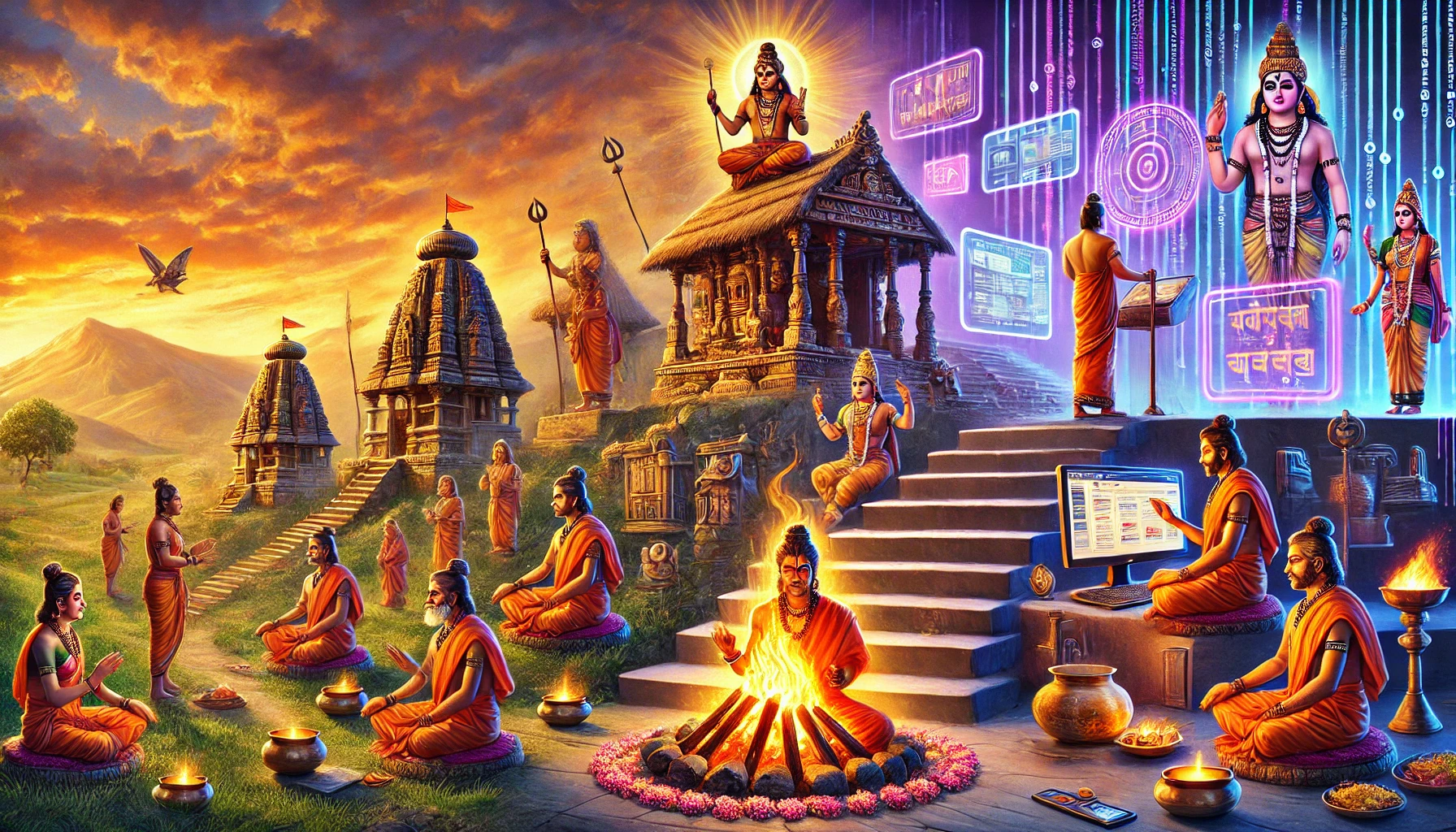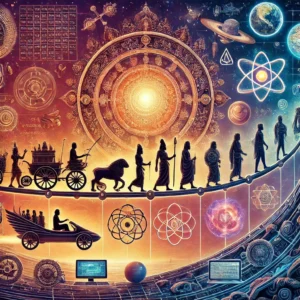
integration of technology in Hindu rituals
The Evolution of Technology in Hindu Rituals
Exploring the Intersection of Tradition and Modernity
Hindu rituals, deeply rooted in centuries-old traditions, have always been a cornerstone of Sanatan Dharma. These practices, often intricate and symbolic, connect devotees with the divine and provide a structured framework for spiritual growth. However, the evolution of technology has ushered in a fascinating transformation in how these rituals are performed, preserved, and propagated. This article explores the ways in which modern technology is intersecting with ancient Hindu rituals, bridging the gap between the sacred and the digital.
The Traditional Foundation of Hindu Rituals
Hindu rituals are a blend of symbolic gestures, recitations, and offerings designed to align the devotee’s mind, body, and soul with cosmic energies. From daily pujas at home to elaborate yajnas performed in temples, these rituals often involve:
Sacred texts like the Vedas and Puranas.
Mantras and chants, which carry vibrational power.
Physical offerings, including flowers, fruits, and incense.
Astrological alignments, dictating the timing of ceremonies.
These elements have remained largely consistent for centuries, preserving the sanctity and continuity of the practices.
Table of Contents
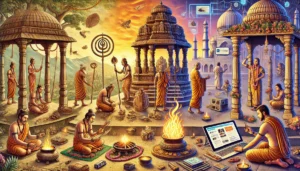
integration of technology in Hindu rituals
The Influence of Technology on Ritual Practices
Digital Access to Sacred Knowledge
Earlier, learning mantras and rituals required in-person guidance from priests or gurus. Today, technology has democratized access to this knowledge. Websites, mobile apps, and YouTube channels offer step-by-step instructions, mantras, and explanations of rituals. For instance:
E-Pandits: Platforms allow devotees to book virtual sessions with priests for online pujas.
Mantra Apps: Applications provide audio and text formats of mantras for easy learning and repetition.
Live Streaming and Virtual Participation
In the era of global connectivity, live-streamed rituals from temples like Tirupati or Kashi Vishwanath have gained immense popularity. This enables devotees, irrespective of their geographical location, to witness and participate in rituals virtually.
During festivals like Navratri or Maha Shivaratri, millions join virtual events, ensuring inclusivity.
Personalized virtual rituals for weddings, shraddhas, and other ceremonies are now commonplace.
Smart Pujas with IoT Devices
Smart home technology has entered the sacred space of Hindu households.
Automated aarti machines mimic the movement of traditional lamps.
Voice-activated devices like Alexa or Google Assistant recite mantras or play devotional songs on command.
Smart idols and mandirs come with built-in lighting and sound systems for enhanced worship experiences.
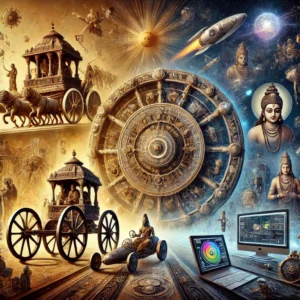
integration of technology in Hindu rituals
Preservation of Sacred Texts Through Digital Archiving
The digitization of ancient scriptures ensures the preservation and accessibility of sacred texts like the Rigveda, Upanishads, and Bhagavad Gita. Organizations like the Digital Library of India and Sanskrit scholars have made these texts available in multiple languages and formats, safeguarding them for future generations.
Astrology and Technology
Astrology, an integral part of Hindu rituals, has been revolutionized by technology.
Astrology apps provide instant muhurta (auspicious time) calculations.
AI-based platforms offer personalized astrological predictions and ritual recommendations.
Eco-Friendly Innovations in Rituals
Modern technology has also addressed environmental concerns associated with traditional rituals.
Biodegradable idols for Ganesh Chaturthi and Durga Puja minimize water pollution.
Apps like e-Dharti offer eco-friendly alternatives to traditional firewood for yajnas.
Virtual offerings (e-dakshina) reduce the environmental impact of physical donations.
Balancing Tradition and Modernity
While technology offers convenience and accessibility, it also raises concerns about the dilution of ritualistic sanctity. It’s crucial to maintain the essence of devotion and discipline that these rituals embody, even as they adapt to modern tools. Some traditionalists argue that virtual rituals cannot replace the energy and presence of in-person ceremonies, while others embrace the evolution as a means to keep traditions alive in a fast-paced world.
Conclusion
The intersection of technology and Hindu rituals represents a harmonious blend of ancient wisdom and modern innovation. By leveraging technology responsibly, devotees can uphold the sanctity of traditions while making them more accessible and sustainable. This evolution not only preserves the rich heritage of Sanatan Dharma but also ensures its relevance in the 21st century and beyond.
As the boundaries between the sacred and the digital continue to blur, the enduring essence of Hindu rituals reminds us that devotion transcends time and space, adapting gracefully to the changing tides of technology.
For more such explorations into the fusion of ancient traditions and modern innovations, visit Prachin Sanatan Yuga.
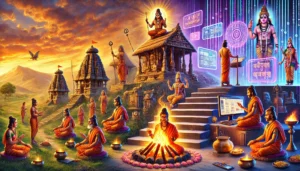
integration of technology in Hindu rituals
FAQs on “Tradition Meets Innovation: The Evolution of Technology in Hindu Rituals”:
- How has technology influenced traditional Hindu rituals?
Technology has modernized the way rituals are performed by introducing tools like mobile apps for mantras, live-streamed temple ceremonies, and automated devices for aartis. This evolution has made rituals more accessible to devotees around the world while preserving their cultural and spiritual significance. It also offers new ways to engage with traditions in an increasingly globalized and fast-paced world.
- Are traditional values compromised with the use of technology in rituals?
Not necessarily. While technology can alter the method of performing rituals, the core essence often remains intact. However, it depends on how technology is implemented. For instance, live-streaming a puja allows global participation without diluting its spiritual importance, but over-commercialization or misinterpretation of rituals might challenge their authenticity.
- What are some examples of technology being used in Hindu rituals?
Online Puja Services: Devotees can book priests for rituals via apps or websites.
Live-Streamed Ceremonies: Festivals and daily aartis are broadcast globally.
Digital Astrological Tools: Software generates detailed birth charts and muhurats.
VR Pilgrimages: Virtual tours of sacred sites like Kashi Vishwanath or Tirupati.
Eco-Friendly Rituals: Automated havan kunds reduce pollution and conserve resources.
- Can technology replace physical rituals?
Technology offers convenience and accessibility, but physical rituals hold a unique spiritual energy and emotional connection that technology struggles to replicate. For example, the tactile experience of offering flowers or the communal aspect of temple gatherings cannot be fully translated into a digital format.
- What role does AI play in Hindu rituals?
AI is revolutionizing how devotees interact with spirituality by:
Creating personalized mantra recommendations based on user needs.
Offering predictive astrology using advanced algorithms.
Assisting in Sanskrit pronunciation for proper mantra recitation.
Simulating virtual priests to guide rituals for those without access to a guru.
- How do temples incorporate modern technology?
Temples across India and abroad are leveraging technology to:
Crowd Management: RFID-enabled tokens and AI-powered monitoring during major festivals.
Eco-Friendly Initiatives: Solar-powered lighting and water recycling systems.
Digital Donations: QR codes and UPI apps for hassle-free offerings.
Outreach: Social media platforms for announcements and updates.
- Is it acceptable to use technology in religious practices?
Acceptance varies among individuals and communities. Many spiritual leaders advocate for its responsible use to make rituals more inclusive and accessible. However, there are concerns about losing the essence of traditions if technology overshadows the spiritual intent behind the practices.
- How has technology impacted youth engagement with Hindu rituals?
By integrating traditions into digital platforms, technology has bridged the gap between ancient practices and modern lifestyles. Apps and YouTube tutorials make complex rituals easier to understand for the tech-savvy younger generation. Social media also fosters interest in learning about festivals, mantras, and Vedic philosophy.
- What are some challenges in combining technology with traditional rituals?
Authenticity: Ensuring that digital adaptations respect the ritual’s original purpose.
Commercialization: Avoiding over-marketing of spiritual services.
Generational Divide: Older generations may resist tech-based changes.
Cybersecurity: Protecting sensitive data shared during online bookings.
Over-Reliance: Preventing dependency on devices for spiritual practices.
- What is the future of Hindu rituals in the digital age?
The future of Hindu rituals may include:
Immersive Experiences: Pilgrimages in virtual reality.
AI Gurus: Personalized guidance for spiritual growth.
Global Access: Connecting diasporas to native traditions through digital mediums.
Sustainability: Eco-friendly practices integrated into rituals using green technology.
Technology promises to make Hindu rituals more inclusive and adaptable, but preserving their sanctity and meaning will remain crucial.
Summary
Tradition Meets Innovation: The Evolution of Technology in Hindu Rituals explores how modern technology has seamlessly blended with the ancient practices of Hindu rituals, creating a unique synergy between timeless traditions and contemporary advancements. Hindu rituals, deeply rooted in spiritual and cultural heritage, have been practiced for millennia, often passed down through oral traditions, scriptures, and community practices. However, as society has evolved, so too have the methods of preserving and performing these rituals.
This article delves into the ways technology has impacted various aspects of Hindu rituals. From the digitization of ancient scriptures and the use of virtual platforms for performing ceremonies to the integration of smart tools like apps for mantra chanting, astrology, and puja schedules, technology is reshaping the way devotees engage with their faith. It highlights the emergence of online temples and livestreamed darshans, which have made religious practices more accessible to devotees worldwide, especially during the COVID-19 pandemic.
Additionally, the article examines the ethical and philosophical debates surrounding this intersection. While some view the adoption of technology as a necessary evolution that makes rituals more inclusive and convenient, others argue that it risks diluting the sanctity and experiential depth of traditional practices.
Through a thoughtful analysis, the article celebrates the adaptability of Hinduism in embracing change while retaining its core values. It showcases inspiring examples where technology has been used to preserve ancient traditions, such as AI tools for decoding Vedic texts and 3D modeling for temple restoration. At the same time, it invites readers to reflect on the delicate balance required to honor tradition while embracing innovation.
This exploration reveals that the essence of Hindu rituals remains unaltered despite technological advancements, as the underlying purpose—connecting with the divine and fostering inner growth—continues to guide practitioners. The article serves as a compelling narrative of how ancient spirituality and modern ingenuity can coexist, offering a blueprint for preserving cultural heritage in a rapidly changing world.
Related Articles
- Restful Nights: Ayurvedic Remedies and Traditional Indian Practices to Overcome Insomnia and Late-Night Habits
- The Tridevi: Lakshmi, Saraswati, and Parvati – Their Roles and Powers
- “Divine Creatures of Ancient Indian Scriptures: Exploring the Role of Animals in the Vedas, Puranas, and Mahabharata”
- Nature and Spirituality: Exploring the Sacred Essence of the Himalayas, Ganga, and Other Natural Wonders”
- “Reviving the Gurukul System: Relevance and Lessons for Modern Education”
- “Exploring Greek and Indian Mythology: Similarities Between Greek and Indian Mythology “
- “Embracing Sattvic Living: Harmonizing Mind, Body, and Soul Through Food and Lifestyle”
- “Charity and Prosperity: Exploring the Concept of Daan and Its Financial Relevance in Modern Life”
- How to Build an Eco-Friendly Home Inspired by Vastu Shastra
- Comparison of Ancient and Modern Sports: How Traditional Sports Have Influenced Contemporary Games
- “Timeless Lessons from Ancient Tales: Linking Samudra Manthan and Ganga’s Descent to Modern Ecological Challenges”
- “Reviving Sanskrit: How AI is Preserving Ancient Languages for the Future”
- “Mathura: The Sacred Land of Lord Krishna’s Divine Leelas”
- Investing for Future Generations: Lessons from Indian Traditions on Legacy Building and Wealth Preservation
- “Ancient Indian Wisdom: Timeless Lessons for Tackling Today’s Climate Crisis”
- “Artificial Intelligence and Spirituality: Transforming Ancient Practices for the Modern World”
- “Gold and Real Estate in India: Timeless Assets Shaping Financial Strategies”
- “Ancient Vimanas: Mythical Flying Machines or Evidence of Advanced Technology?”
- Time Travel in Hindu Mythology: The Fascinating Tales of Kakudmi and King Raivata
- “Divine Feminine Power in Hindu Mythology: The Legends of Durga, Saraswati, and Lakshmi”
- “Divine Beings of Sanatan Dharma: The Spiritual Significance of Sacred Animals in Hinduism”
- “Symbolism in Mythological Art: Unlocking Hidden Meanings in Ancient Temple Carvings”
- “Exploring Technological Advancements in Ancient India and Civilizations: Vimana, Metallurgy, & Water Management systems”
- Unveiling the Mysteries: Ancient Temples of Sanatan Dharma , Mysterious Temples of India
- “The Scientific Knowledge of Sanatan Dharma: Ancient Wisdom Meets Modern Science”
- Ancient Indian Sports and Games: Celebrating a Legacy of Skill, Strength & Strategy”
- “Exploring the Cosmic Link: The Connection Between Astronomy and Vedic Astrology”
- The Power of Sanskrit: Unlocking the Divine Language of the Gods
- “The End of Kaliyuga: A Sanatan Insight into the World’s Final Chapter”
- Explore more articles on Prachin Sanatan Yuga.
Tradition Meets Innovation: The Evolution of Technology in Hindu Rituals explores the integration of technology in ancient Indian Hindu rituals. The text delves into the fascinating historical developments that shaped the use of technology within religious practices, showcasing the seamless blend of tradition and innovation. It highlights how ancient Indians ingeniously utilized technology to enhance and elevate their spiritual experiences, offering a unique perspective on the technological advancements of the time. The article provides a comprehensive insight into the evolution of technology in ancient Indian culture and its significance in Hindu rituals.
Tradition Meets Innovation: The Evolution of Technology in Hindu Rituals explores the integration of technology in Hindu rituals. This article delves into the ways in which technology has influenced and enhanced various aspects of these sacred practices, highlighting the seamless blend of ancient traditions with modern advancements. From digital mantras to virtual worship platforms, technology has undoubtedly revolutionized the way Hindu rituals are performed, ushering in a new era of spiritual connectivity.
Tradition Meets Innovation: The Evolution of Technology in Hindu Rituals explores the integration of technology in Hindu rituals, showcasing the seamless blend of ancient traditions with modern advancements. From digital mantras to virtual worship platforms, technology has revolutionized the way Hindu rituals are performed, enhancing various aspects of these sacred practices. It highlights the significant role technology plays in enriching spiritual experiences and connecting individuals to their religious heritage.
Tradition Meets Innovation: The Evolution of Technology in Hindu Rituals explores the integration of technology in Hindu rituals, showcasing the seamless blend of ancient traditions with modern advancements. From digital mantras to virtual worship platforms, technology has revolutionized the way Hindu rituals are performed, enhancing various aspects of these sacred practices. It highlights the significant role technology plays in enriching spiritual experiences and connecting individuals to their religious heritage.
Artificial Intelligence (AI) is transforming education by playing a crucial role in preserving and revitalizing ancient knowledge systems. From digitizing and translating ancient texts to teaching languages like Sanskrit, AI bridges the gap between the past and the present. Technologies like machine learning, natural language processing (NLP), and virtual reality (VR) enable the recreation of ancient scripts, immersive cultural experiences, and accessible language learning platforms.
AI-powered tools also support historical research by decoding ancient events and correlating them with modern science. Beyond texts, AI is preserving traditional art, music, and practices while creating comprehensive digital archives. Personalized curricula and gamified learning platforms are integrating ancient wisdom into modern education, making it relevant and engaging.
AI is more than a technological innovation—it is a bridge that connects humanity’s past with its future. By preserving ancient knowledge and making it accessible through education, AI ensures that the wisdom of our ancestors remains a guiding light in the journey of progress. The integration of tradition and technology offers a harmonious path forward, where modernity respects and learns from the depth of ancient civilizations. Through ethical and thoughtful application, AI can help us rediscover the timeless truths of our heritage, enabling them to inspire and guide generations to come.
